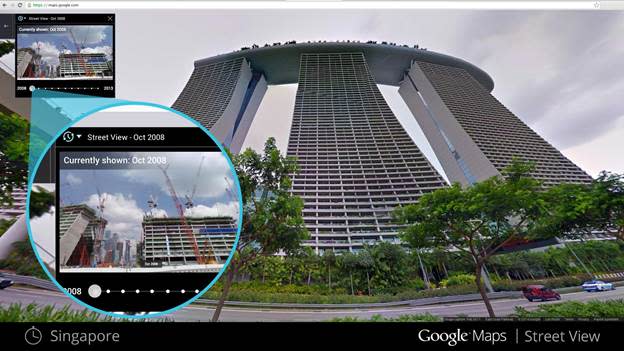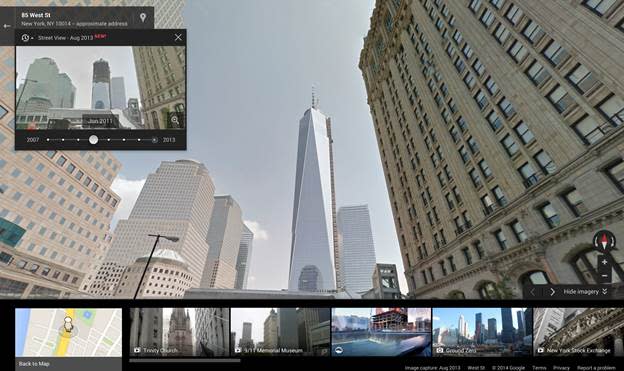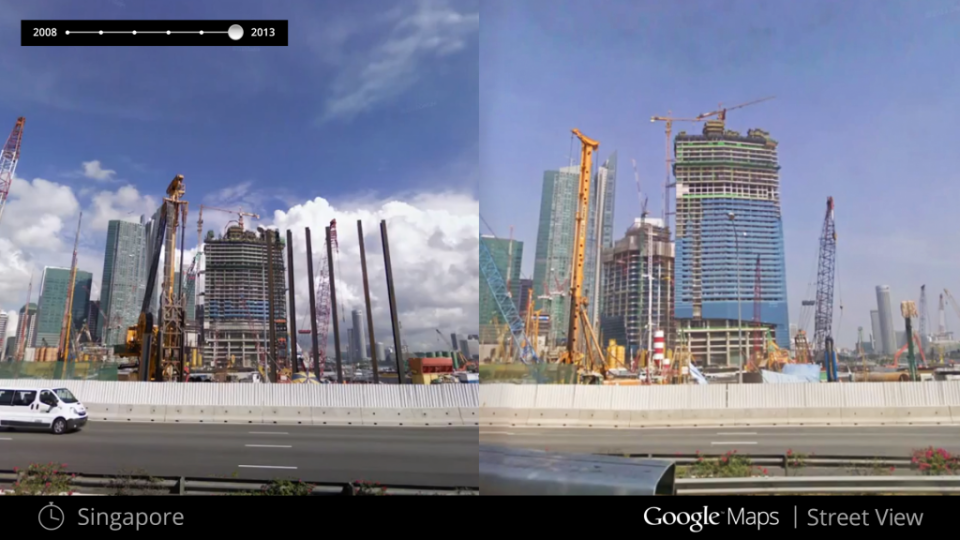Google Street View now lets you travel back in time. We think its potential is MASSIVE.
Who says tech companies are only fixated on the future? Google seems to think otherwise and it is doing our appetite for nostalgia a favour by allowing us to explore how landmarks have changed over the years.
Seeing how famous buildings such as the Marina Bay Sands in Singapore or the 2014 World Cup Stadium was built from ground up may not give you geeks out there a tech boner, but it is the process and user experience involved that I find most compelling.
Singapore’s Marina Bay Sands, before and after. Photo: Google
Tens of thousands (if not millions) of Google Street View images dating back to 2007 were curated and compiled into a collection for this project. All the user needs to do is to move a slider through time and select a thumbnail to see that same place in previous years or seasons.
Such simplicity; so Google.
Naturally, online users have flocked to Google’s official blog, most stating how impressed they were by the newly launched service. One user commented: “I think we’ve all been waiting for this for a long time! Google Earth has had something similar – except in the aerial view only. Now, however, Street View “time machine” looks every bit as interesting … if not a tax-collector’s dream.”
Construction of the Freedom Tower, New York City. Photo: Google
Nonetheless, I am more curious and excited for the potential this ‘time machine’ could offer. At the back of my head now, I can think of its application to classroom scenarios especially for humanities subjects such as History and Geography.
Instead of showing a side-by-side image of the Sumatran Forest in Indonesia for example, students can now explore for themselves the specific area of interest and engage with the process directly. It can be a more enriching learning experience.
The Singapore Skyline. Photo: Google
And if I may trudge slightly beyond education, the potential for Google Street View for travel research is also massive. I can now plan the best time to visit lets say Korea for example by having these questions fully or half answered: What’s the best time to catch flowers blossoming? And what type of flowers can I see during autumn and spring?
Yes, such images are already available in Google’s image results but being able to witness how the seasons change (the complete atmosphere) is a more convincing tool. Travel companies may even bank in on the time slider feature to prove that their materials are no gimmick.
Google Street View is now officially the Internet’s biggest time machine. What’s even bigger is its potential. Now that the past has been taken care of, the future looks good.
Also read: Finally someone is doing something interesting with Google Glass in Asia
The post Google Street View now lets you travel back in time. We think its potential is MASSIVE. appeared first on Vulcan Post.

 Yahoo Finance
Yahoo Finance 



